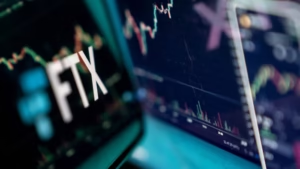
The sequence “99.99-65-0.23-32.32-5” presents a fascinating puzzle that invites interpretation across various fields. This combination of numbers and symbols may initially seem random, yet it can convey significant meanings in different contexts. For instance, it might represent scientific measurements, encrypted information, or even product identifiers. Each segment of the sequence can evoke a unique interpretation, making it a versatile expression of quantitative information. By delving into the potential implications of such a string, readers can uncover insights that bridge technology, mathematics, and everyday applications.
Exploring the significance of “99.99-65-0.23-32.32-5” offers a rich opportunity for those curious about the underlying structures in what often appears to be a chaotic mix of numbers. The meanings derived from this sequence can vary widely, ranging from technical data in scientific research to practical uses in product management. Understanding how to decode such a string not only enhances one’s analytical skills but also reveals the interconnectedness of numerical representation in various domains. This exploration serves as an enlightening journey for anyone eager to decode the deeper messages embedded in seemingly arbitrary numerical formats.
Analyzing the Numerical Sequence

When examining the sequence of numbers presented, it reveals a fascinating blend of both decimal and whole numbers that could serve various purposes, ranging from data representation to mathematical equations. Each component of the sequence merits individual attention to fully appreciate its potential significance. This analysis will dissect the elements one by one, offering insights into their possible interpretations and applications in real-world scenarios.
Starting with the initial figure, 99.99, we observe that it often indicates a level of precision that is highly valued across numerous scientific fields, including chemistry and finance. Such an exact value could represent a measurement that demands accuracy, which is crucial for research and financial calculations. This emphasis on precision highlights how critical exactness can be in various disciplines, where even the smallest deviation might lead to significant consequences.
Moving on to the subsequent numbers, 65 may serve as a simple integer representing a count, age, or index value, while 0.23 functions as a fractional figure that could indicate probabilities or percentages in engineering contexts. The number 32.32 might be interpreted as geographical coordinates, suggesting a location, or it could signify a financial ratio, crucial for assessments in economic analyses. Finally, the integer 5 could denote ranking or importance in a sequence, further underlining the multifaceted nature of this numerical string. Together, these components illustrate how a seemingly random assortment of numbers can convey rich and varied meanings across different fields of study.
Understanding the Significance of Numerical Sequences

In the realms of data science and computational algorithms, sequences of numbers can convey vital information about datasets or models. These numbers often encapsulate insights that are critical for analysis and decision-making processes. By breaking down a specific sequence, we can explore its potential applications and meanings across various domains, including technology, finance, and geography.
99.99% Accuracy in Machine Learning
One prominent aspect of this sequence is the representation of 99.99% accuracy, which speaks to the level of precision achievable in machine learning models. In technological contexts, such a high accuracy indicates that the algorithm has been fine-tuned to perform exceptionally well, minimizing errors in predictions and classifications. This level of accuracy is particularly crucial in fields where precision is paramount, such as healthcare diagnostics, financial forecasting, and autonomous systems, where even minor inaccuracies can have significant repercussions.
The Role of the Index Number: 65
Next in the sequence is 65, which often serves as an index number in various algorithms, particularly those related to encryption and networking. In this context, the number can represent an identifier, such as a specific ID or packet number in communication protocols. This identification is essential for maintaining the integrity of data transmission, ensuring that packets are accurately tracked and processed. The use of index numbers allows for efficient organization and retrieval of information, highlighting the importance of structured data in modern computing.
Understanding 0.23 as an Error Rate
The decimal 0.23 can be interpreted as an error rate or a measure of deviation in scientific or financial contexts. For instance, it might indicate a 0.23% deviation in stock prices or reflect measurement errors in experimental data. Understanding this error rate is vital for analysts and researchers, as it helps gauge the reliability of their findings or predictions. In financial analysis, such deviations can influence investment strategies and risk assessments, underscoring the importance of accuracy in data interpretation.
Geographical Implications of 32.32
The number 32.32 could be associated with geographical coordinates, specifically latitude and longitude. When placed within a geographical context, this decimal can pinpoint a location, potentially situating it in regions such as Central America or the Mediterranean Sea. Geographical data is essential for a variety of applications, including navigation, urban planning, and environmental studies. By identifying precise locations, researchers can make informed decisions based on geographical insights, impacting everything from resource management to disaster response.
Ranking and Identifier: The Significance of 5
Finally, the integer 5 can serve multiple purposes, often functioning as a ranking or identifier within a sequence. This number might indicate a position in a series, suggesting a level of priority, phase of testing, or categorization of items. In contexts such as project management or data analysis, such rankings help prioritize tasks and streamline processes, ensuring that critical elements receive the attention they require. The ability to categorize and rank information effectively is crucial in decision-making environments.
The Multifaceted Nature of Numerical Sequences
Overall, this sequence of numbers embodies a range of interpretations and applications across various fields. From the high accuracy of machine learning models to the identification of geographical locations, each element plays a significant role in enhancing our understanding of data. By analyzing these numbers, we can uncover valuable insights that contribute to advancements in technology, finance, and science, highlighting the profound impact that numerical sequences can have in our increasingly data-driven world.
Understanding the Role of Numerical Sequences in Cryptography

Numerical sequences like “99.99-65-0.23-32.32-5” may serve as encryption keys or codes within the realm of cryptography, highlighting their importance in secure communications. Each segment of this sequence can represent specific values essential to enhancing security protocols. For instance, the first number, 99.99, suggests a high level of encryption strength, potentially functioning as a checksum or hash value that verifies the integrity of data. This level of precision is critical in ensuring that information remains secure against unauthorized access.
The middle components, 65 and 0.23, could signify parameters used in symmetric key or block cipher algorithms. These values play a vital role in the processes of encrypting and decrypting data, acting as variable inputs that adapt the algorithms to different contexts and requirements. Their inclusion underscores the necessity for flexibility and adaptability in cryptographic systems, allowing for secure communication tailored to specific situations.
Lastly, the numbers 32.32 and 5 might represent cryptographic constants or contribute to the generation of pseudorandom sequences, which are fundamental in maintaining security in digital communications. Pseudorandomness is crucial for ensuring that encryption methods are robust against attacks, as it prevents predictability in the keys used. Together, these elements illustrate how complex numerical sequences can encode significant information, enhancing the effectiveness of cryptographic systems in safeguarding data.
Analyzing Financial and Mathematical Significance of the String “99.99-65-0.23-32.32-5”
The sequence “99.99-65-0.23-32.32-5” could represent various concepts in finance or mathematics, each number symbolizing important aspects of economic analysis. The initial figure, 99.99, likely represents a percentage indicating near-total completion or high efficiency, frequently found in reports on project performance, investment returns, or success rates. This almost perfect figure is often used as a benchmark for successful execution in business or financial operations. The number 65 typically relates to life milestones, particularly in retirement planning, as many countries set 65 as the standard retirement age, making it a key figure in pension planning and life expectancy assessments.
The figure 0.23 likely corresponds to smaller financial metrics, such as interest rates or inflation percentages. Despite its modest appearance, this figure could play a significant role in long-term financial strategies, indicating small yet impactful changes in return on investment. Similarly, 32.32 may be associated with financial indicators such as stock prices or currency values, offering a precise reflection of assets in fluctuating markets. The final number, 5, may symbolize stages of growth or development within a business. Companies often progress through phases, from inception to expansion, and 5 could represent one of these crucial stages in achieving long-term success.
When viewed together, these figures present a detailed financial scenario, guiding decision-making and offering insights into market trends or financial planning. The sequence showcases a mix of smaller and larger figures, reflecting various elements of economic analysis. The precision and context behind each number emphasize the importance of accurate data interpretation in finance, making this sequence a valuable tool for understanding different components of a financial narrative.
Interpreting Geographical and Temporal Significance of the String “99.99-65-0.23-32.32-5”
The string “99.99-65-0.23-32.32-5” could be interpreted in various ways, particularly when examining geographical or temporal data. The number 32.32, commonly associated with latitude or longitude, could point to specific locations such as regions within Mexico or Israel. This geographical interpretation highlights how such numbers are used in navigation, urban planning, and mapping to identify precise locations on Earth. Latitude and longitude play a crucial role in pinpointing areas for various applications, from travel to environmental studies.
Meanwhile, the number 99.99 might relate to date and time storage in certain systems. In databases or logistical applications, numbers like this are often formatted in decimal form to represent specific moments in time. This is especially important in fields where precise chronological data is required, such as historical records or travel coordination. These figures help ensure that events and timelines are accurately tracked across different systems and contexts.
The combination of these elements suggests a multidimensional interpretation, where the string could reflect both geographical coordinates and moments in time. Such a hybrid use of numbers offers deeper insights into global events or movements, which are critical in industries like aviation, international trade, and logistics. By cross-referencing place and time, numbers like 32.32 and 99.99 provide a framework for analyzing patterns of movement or activity across space and time.
In essence, the string “99.99-65-0.23-32.32-5” showcases the versatility of numbers, offering significant meaning across domains like geography, timekeeping, and data tracking, all of which are essential for navigating today’s interconnected world.
FAQs
Q1. What does the sequence “99.99-65-0.23-32.32-5” represent?
A. The sequence could symbolize different concepts across fields such as mathematics, finance, and geography, with potential meanings like percentages, coordinates, or financial metrics.
Q2. Can “99.99” refer to geographical data?
A. Yes, while “99.99” could represent time or percentage values, it might also be linked to specific forms of data storage, such as dates or times recorded in decimal formats.
Q3. What significance does “32.32” hold in this sequence?
A. “32.32” may relate to geographical coordinates, possibly indicating a location like parts of Mexico or Israel, where the latitude or longitude aligns with 32.32.
Q4. How could “0.23” be interpreted?
A. “0.23” could represent a small percentage or probability, commonly seen in financial contexts like interest rates, inflation, or return on investment calculations.
Q5. Does the number “65” have financial relevance?
A. Yes, “65” is often associated with retirement age, making it significant in financial planning and societal milestones, particularly in relation to pensions or life expectancy.
Q6. What is the role of “5” in the sequence?
A. The number “5” could denote stages of development, importance in rankings, or phases in a sequence, often related to business growth or strategic planning.
Related: Ac22bp0y181-51c8-Datasheet
Conclusion
The sequence “99.99-65-0.23-32.32-5” holds diverse interpretations across fields like finance, geography, and mathematics. Whether representing percentages, coordinates, or financial metrics, each element of the sequence offers valuable insights depending on its context. This highlights the versatility of numerical sequences in conveying complex data and underscores their importance in various disciplines, from financial analysis to geographical mapping.
Stay connected for the latest news and exciting stories on Al Jazeera Radio!





